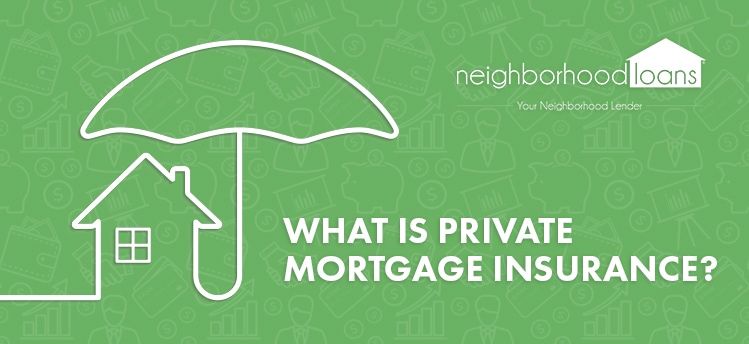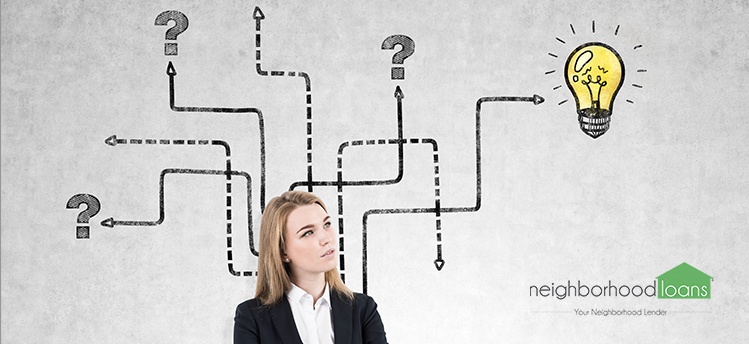Everything You Need To Know About Private Mortgage Insurance

When making a large investment, you will have to carefully plan it out and understand the responsibility that comes with it.
But, no matter how much you prepare, sometimes disasters that are out of your control can occur.
Home insurance provides comfort and reassurance even during the most stressful times. This pre-planned solution will take care of everything.
When buying a home, it is highly advised to purchase home insurance to protect yourself from unpredictable tragedies like fires, earthquakes, or robberies.
However, there is another type of mortgage insurance that all potential homeowners should be aware of.
Before you start the paperwork for your home application, familiarize yourself with private mortgage insurance.
This is even more important if you plan on making a down payment below 20% of the home’s value.
What is private mortgage insurance (PMI)?

Private mortgage insurance, also known as PMI, is a type of mortgage insurance that may be required depending on your loan-to-value ratio.
Unlike your typical home insurance, PMI protects the lender if the borrower stops making payments on the loan.
PMI is most often required by the lender when the borrower applies for a conventional loan and makes a down payment less than 20% of the home’s market price.
The amount you put down upfront is the foundation for the monthly payments you will be making.
Private insurance companies provide PMI and your lender will arrange the requirements and expectations for the borrower.
How to pay for PMI

Depending on the type of loan and what your lender offers, there are many ways to pay for PMI.
Before deciding on a mortgage, ask your lender what payment options they offer.
Typically, the most common way to pay for PMI is a monthly premium.
This premium will be automatically added to your monthly mortgage payments.
When you apply for a mortgage with a down payment of less than 20%, a premium will be calculated into your loan estimate, which will give you a better idea of how to budget responsibly.
Another option available to borrowers is a one-time upfront premium paid at closing.
Again, this premium will be shown on your loan estimate when you apply for a mortgage.
However, if you make an upfront payment and decide to move or refinance, you may not get refunded for the premium.
Some lenders require borrowers to pay both upfront and monthly premiums. Either way, your lender will add and calculate both premiums into the loan estimate, providing you a detailed outline of your costs.
To make the right decision, ask your loan officer to calculate several scenarios over a certain time frame to give you a better idea of how your budget could look.
What factors to consider

Choosing a mortgage loan that requires PMI can potentially help you qualify for a loan that may not be easy to obtain.
However, it may increase the cost of your loan.
PMI only protects the lender, not the borrower, if you end up in foreclosure.
Sometimes, lenders offer conventional loans with small down payments that don’t require PMI – but loan payments will come with a higher interest rate.
To avoid spending more money than necessary, ask for a tax advisor’s opinion if paying a higher interest rate or PMI will affect your taxes differently.
If you plan on making a low down payment, consider different mortgage programs that don’t require PMI, such as an FHA loan.
The Federal Housing Administration (FHA) offers homebuyers loans that require a down payment of as little as 3.5% of the home’s market value.
Consider other available mortgage loan options to help finance your home. There are also loan grants and programs that offer down payment assistance to those who qualify!
Depending on your credit score, income, market conditions, and down payment amount, other loans may be more economical for you aside from a conventional loan.
If you choose to use a conventional loan that requires PMI, remember the financial burden that comes with it.
How to get rid of PMI

Once you have built enough equity in your home, PMI can be removed from your monthly payments.
To do so, you must have at least 20% equity in the home.
You may ask your lender to cancel PMI only if you have paid your mortgage balance to 80% of the home’s original value.
Once your mortgage balance drops to 78%, your mortgage lender is required to cancel PMI.
If you are looking for ways to cancel PMI sooner than later, here are some solutions:
Refinance
If the value of your home has increased over time, your mortgage lender will not require private mortgage insurance.
This solution can also reduce monthly interest payments.
However, refinancing only works if your home’s value has increased since the last time you got a mortgage.
Get a new appraisal
A new appraisal can accurately estimate the value of your home and make sure it meets the 20% equity requirement.
Before setting up an appraisal, ask your lender if this solution will work in your case.
Prepay your loan
Any additional contributions to monthly payments can help decrease the principle of your loan quickly. If you have extra room in your budget or luck your way into a small fortune, it’s wise to put some of the money towards paying down your balance.
Remodel
Remodeling an outdated room, installing a new furnace system, or adding a pool can increase your home’s market value.
Once your renovations are complete, ask your lender to recalculate your loan-to-value ratio using the home’s new value.
How to calculate PMI
If you just can’t bear to wait for your lender to calculate your mortgage balance, you can do it yourself.
To see if your loan balance is 80% of the home’s value, divide the current loan balance (the amount you still owe) by the original appraised value (purchase price of the home).
For example:
Shelia owes $160,600 on a house that cost $200,000 several years ago.
$160,600 / $200,000 = 0.803.
This rounds down to 80%, which meets the mortgage balance requirement needed to get rid of PMI.
To stop making extra monthly payments, canceling PMI should be a priority once your loan-to-value is where it needs to be.
According to the Consumer Financial Protection Bureau, there are certain requirements to be met:
- Your request to cancel PMI must be in writing.
- You must be current on all payments and have a good payment history.
- You may have to prove there are no other liens on the home.
- You may have to get an appraisal to prove your loan balance is not more than 80% of the home’s current value.
Some lenders can issue more strict guidelines if you are a high-risk borrower. Before asking your lender to cancel PMI, make sure you are up to date on all mortgage payments.
If you are consistently late on payments, your lender can deny your request for PMI removal.
The bottom line
Private mortgage insurance only protects the mortgage lender if the borrower fails to make payments.
To avoid PMI, start your mortgage process by making a down payment of 20%.
This will protect you from adding an expensive premium to your total loan balance.
Or, consider applying for a different mortgage program that doesn’t require the traditional down payment.
Don’t freak out if your down payment is less than 20%, there are ways to eliminate PMI all together after your home’s equity has increased over time.
